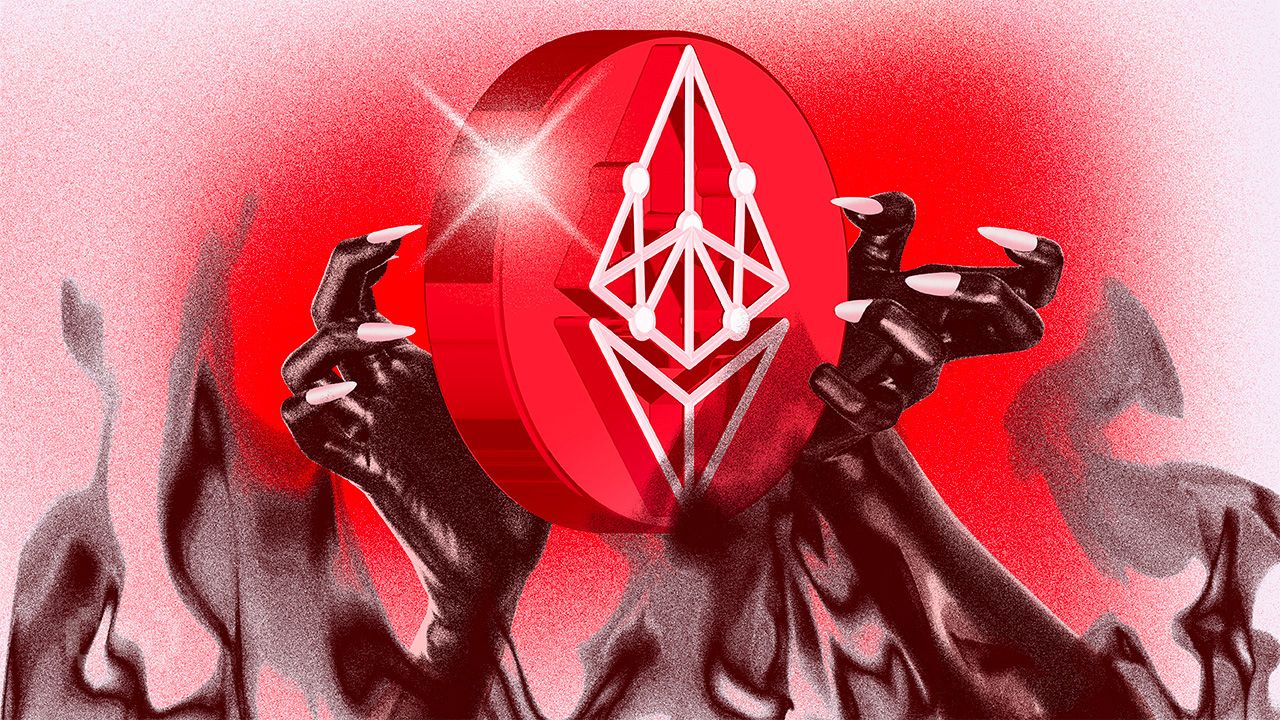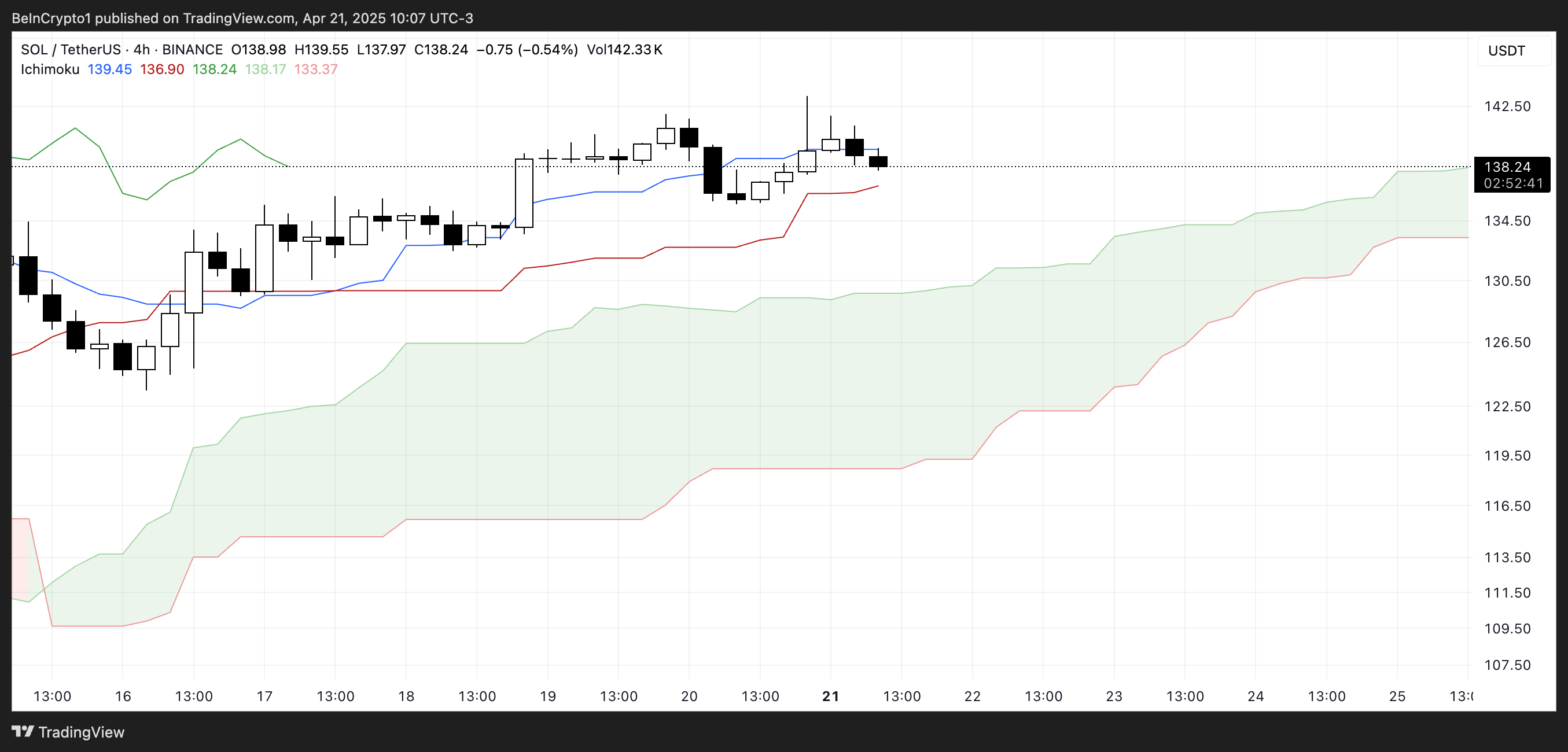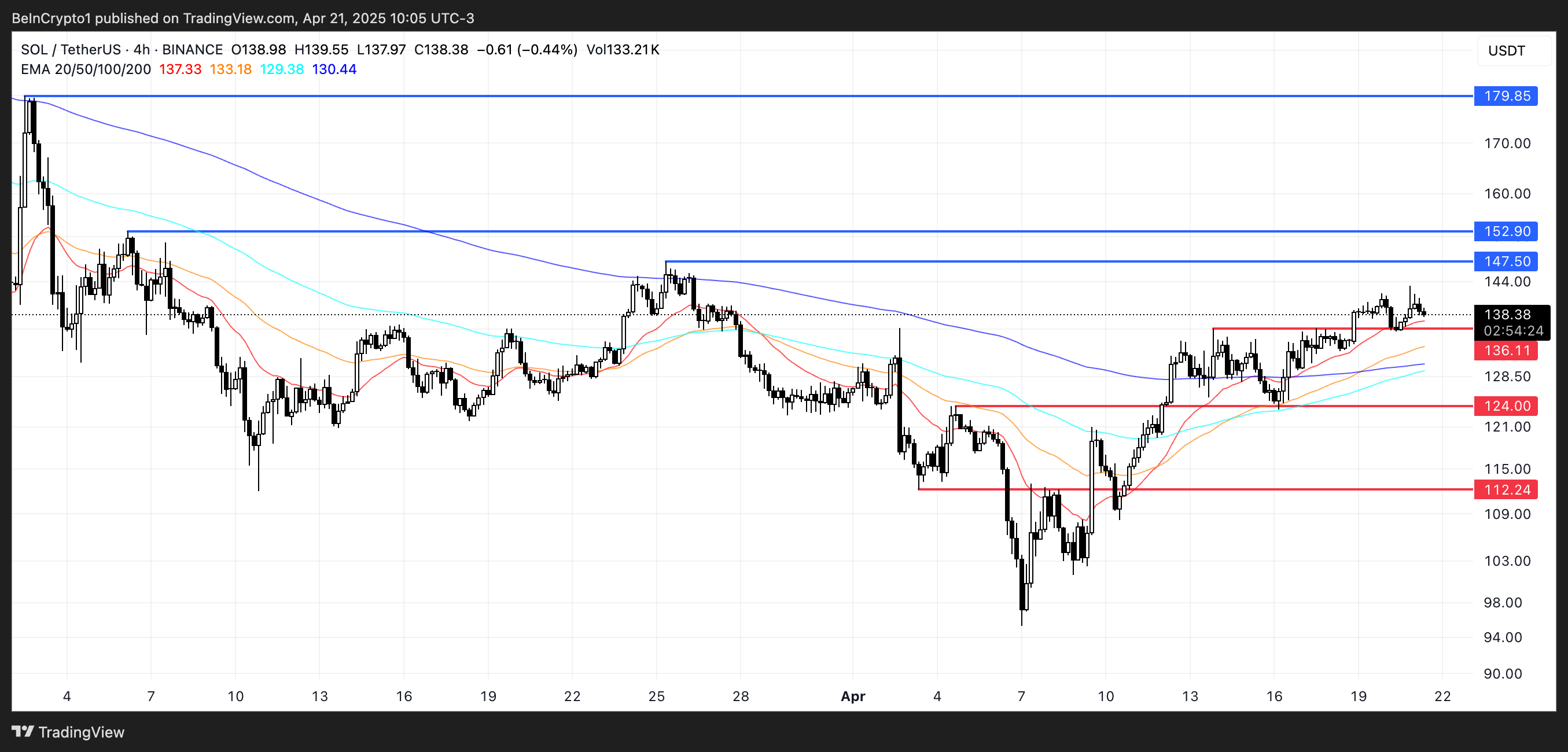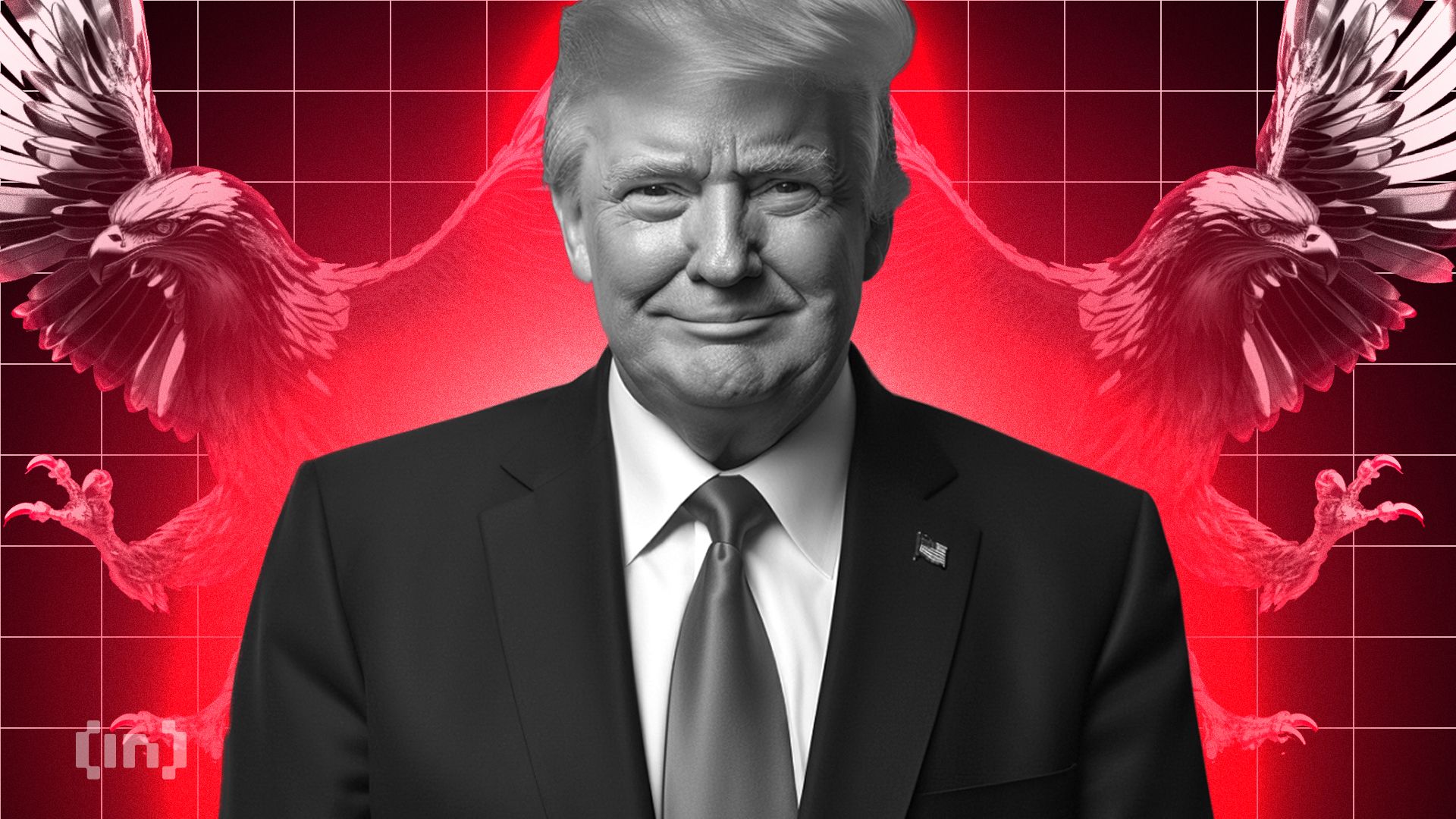Market
Argot Sparks Outcry as Ethereum Foundation Ignores Vyper


The Ethereum Foundation launched the Argot Collective — a long-term, non-profit organization for Ethereum software development.
However, the initiative has sparked controversy, especially among proponents of the Vyper programming language.
Curve Finance Founder Michael Egorov Slams Ethereum Foundation
The Argot Collective shared the announcement, revealing a structure to support Ethereum-related projects for up to a decade, with the backing of long-term grants. Based on the blog, Argot’s mission is to foster a non-hierarchical, democratically governed environment that promotes software development for the Ethereum ecosystem free from commercial pressures.
Argot will focus on several projects, including Solidity, Fe, and other Ethereum tools. It will provide ongoing support for these languages to enhance Ethereum’s developer environment. The Argot Collective is designed to “eliminate rent extraction or exploitative profit-seeking.” It will also serve as a counterbalance to finance-driven entities within the Ethereum community.
Read more: A Deeper Look into the Ethereum Network.
Notably, Fe is a safety-focused Ethereum smart contract language that uses Vyper as a foundation. Vyper is also a contract-oriented programming language that targets the Ethereum Virtual Machine (EVM). The absence of funding for Vyper raises red flags for developers who rely on it.
The Foundation’s critics argue that Vyper’s lack of funding could undermine security and usability for projects that depend on it, making it more difficult to maintain and develop. Nevertheless, the Ethereum Foundation seems to overlook this.
“A group which was deciding to fund projects within Ethereum Foundation (now independent). With a focus on languages (c), they did not fund Vyper (used by Curve Finance, Lido Finance, and yearn Finance). However, they funded Fe (used by exactly no one). Coincidentally and unrelated, members of the group = team members of the funded projects,” Curve founder Michael Egorov remarked.
Egorov’s comments hint at a deeper skepticism, suggesting that personal or professional affiliations within the Foundation may have unduly influenced the decision. The idea is that Vyper’s integral role in decentralized finance (DeFi) warrants support similar to what Argot is now providing for other EVM-compatible languages.
“I find it a bit sad but also a bit cypherpunk that Vyper is always left out of these organizations/collectives. Kind of a ‘you don’t own me’ underdog positioning or incredibly talented people,” another X user commented.
Nevertheless, the launch of Argot reflects a broader organizational shift within the Ethereum Foundation. It has moved toward empowering independent bodies to steer various facets of its development.
Argot Collective Commits to Financial Transparency
In the statement, Argot explained that it is committed to “financial and organizational transparency,” intending to release detailed documentation on budgets, governance, and plans. Argot also promised that the organization would maintain financial autonomy through grants and staking income. This is as opposed to traditional financing models, rejecting equity sales, token offerings, or closed-source projects.
Some community members have also speculated that the preference for niche languages within Argot might reflect a quiet push toward technical decentralization. Reportedly, the Ethereum Foundation is looking to ensure diverse tool support across the EVM.
“This is something I’ve said for years, Solidity (and related projects) finally spinning out from the EF [Ethereum Foundation] into their own independently organized and financed foundation. This is incredibly bullish for Ethereum,” an X user said.
Yet, for Ethereum’s DeFi heavyweights, these assurances may fall short. The funding disparity appears to undercut projects essential to Ethereum’s financial ecosystem, with experimental languages seemingly taking priority over ones that are already integral to DeFi’s infrastructure.
The general sentiment in the replies to Egorov’s comment is that funding should follow impact. Critics see Vyper as vital to Ethereum’s security and usability. They argue that excluding it from funding signals a potentially harmful bias in the Foundation’s approach to resource allocation.
The fallout from this controversy has opened a broader debate around Ethereum’s funding priorities. The potential influence of personal affiliations on decision-making within the ecosystem is also a concern based on feedback.
Read more: How To Fund Innovation: A Guide to Web3 Grants
As the Argot Collective prepares for its official launch in early 2025, the Ethereum Foundation may find itself increasingly pressured to address these concerns. For now, the community awaits further clarifications, hoping that the Foundation’s actions will ultimately reflect the decentralized, democratic ethos it aims to embody.
Disclaimer
In adherence to the Trust Project guidelines, BeInCrypto is committed to unbiased, transparent reporting. This news article aims to provide accurate, timely information. However, readers are advised to verify facts independently and consult with a professional before making any decisions based on this content. Please note that our Terms and Conditions, Privacy Policy, and Disclaimers have been updated.
Market
Report Alleges Massive Meme Coin Sniping on Pump.fun

According to a new report from Pine Analytics, token deployers on Pump.fun systematically funded sniper wallets to buy their own meme coins. This impacted over 15,000 token launches on the platform.
These sniper wallets operated primarily during US trading hours, executing standardized, profitable strategies. Unrelated bot activity obscures their behavior, making it extremely difficult to isolate these wallets—and they can readily adapt to new countermeasures.
Snipers Roam Free on Pump.fun Meme Coins
Pump.fun has remained one of the most popular meme coin launchpads on Solana despite persistent controversies and other criticism.
However, Pine Analytics’ new report has uncovered a new controversy, discovering systematic market manipulation on the platform. These snipes include as much as 1.75% of all launch activity on Pump.fun.
“Our analysis reveals that this tactic is not rare or fringe — over the past month alone, more than 15,000 SOL in realized profit was extracted through this method, across 15,000+ launches involving 4,600+ sniper wallets and 10,400+ deployers. These wallets demonstrate unusually high success rates (87% of snipes were profitable), clean exits, and structured operational patterns,” it claimed.
Solana meme coin deployers on Pump.fun follow a consistent pattern. They fund one or more sniper wallets and grant them advance notice of upcoming token launches.
Those wallets purchase tokens in the very first block and then liquidate almost immediately—85% within five minutes and 90% in just one or two swap events.

Pump.fun meme coin developers exploit this tactic to create the appearance of immediate demand for their tokens. Retail investors, unaware of the prior sell‑off, often purchase these tokens after the snipe, giving developers an unfair advantage. This constitutes market manipulation and erodes trust in the platform.
Pine Analytics had to carefully calibrate its methods to identify genuine snipers. Apparently, 50% of meme coin launches on Pump.fun involve sniping, but most of this is probably bots using the “spray and pray” method.
However, by filtering out snipers with no direct links to developer wallets, the firm missed projects that covered their tracks through proxies and burners.
In other words, the meme coin community does not have adequate defenses against systematic abuse on Pump.fun. There are a few possible ways that the platform could flag repeat offenders and sketchy projects, but adaptive countermeasures could defeat them. This problem demands persistent and proactive action.
Unfortunately, it may be difficult to enact such policies. Meme coin sniping is so systematic that Pump.fun could only fight it with real commitment.
Analysts think that building an on-chain culture that rewards transparency over extraction is the best long-term solution. A shift like that would be truly seismic, and the meme coin sector might not survive it.
Disclaimer
In adherence to the Trust Project guidelines, BeInCrypto is committed to unbiased, transparent reporting. This news article aims to provide accurate, timely information. However, readers are advised to verify facts independently and consult with a professional before making any decisions based on this content. Please note that our Terms and Conditions, Privacy Policy, and Disclaimers have been updated.
Market
Solana Leads Blockchain Metrics as SOL Momentum Builds

Solana (SOL) continues to show strength across multiple fronts, maintaining a bullish structure on its Ichimoku Cloud chart while gaining momentum in key market metrics. The BBTrend indicator has turned higher again, signaling renewed buying pressure after a brief cooldown.
On-chain activity remains strong, with Solana leading all blockchains in DEX volume and dominating fee generation thanks to the explosive growth of meme coins and launchpad activity. With SOL now trading above a key resistance level, the path is open for further upside—though a loss of momentum could still trigger a retest of lower supports.
Solana Maintains Bullish Structure, but Momentum Faces Key Test
On Solana’s Ichimoku Cloud chart, the price is currently above the Kijun-sen (red base line) but has dipped below the Tenkan-sen (blue conversion line), signaling weakening short-term momentum.
The flattening Tenkan-sen and price behavior suggest possible consolidation or the early stages of a pullback. Still, with the price holding above the Kijun-sen, medium-term support remains intact.

The overall Ichimoku structure remains bullish, with a thick, rising cloud and leading span A well above span B—indicating strong underlying support.
If Solana finds support at the Kijun-sen and climbs back above the Tenkan-sen, the uptrend could regain strength; otherwise, a test of the cloud’s upper boundary may follow.

Meanwhile, Solana’s BBTrend is currently at 6, extending nearly ten days in positive territory after peaking at 17.5 on April 14. The recent increase from 4.26 to 6 suggests renewed bullish momentum following a brief cooldown.
BBTrend, or Bollinger Band Trend, tracks the strength of price movement based on Bollinger Band expansion.
Positive values like the current one point to an active uptrend, and if the BBTrend continues to rise, it could signal stronger momentum and potential for another upward move.
Solana Dominates DEX Volume and Fee Generation as Meme Coins Drive Ecosystem Growth
Solana has once again claimed the top spot among all chains in DEX volume, recording $15.15 billion over the past seven days. The combined total of Ethereum, BNB, Base, and Arbitrum reached $22.7 billion.

In the last 24 hours alone, Solana saw $1.67 billion in volume, largely fueled by its booming meme coin ecosystem and the ongoing launchpad battle between PumpFun and Raydium. Adding to this good momentum, Solana recently surpassed Ethereum in Staking Market Cap.

When it comes to application fees, Solana’s momentum is just as clear. Four of the top ten fee-generating apps over the past week—PumpFun, Jupiter, Jito, and Meteora—are Solana-focused.
Pump leads the pack with nearly $18 million in fees alone.
Solana Breaks Key Resistance as Uptrend Targets Higher Levels, but Risks Remain
Solana has finally broken above its key resistance at $136, flipping it into a new support level that was successfully tested just yesterday.
Its EMA lines remain aligned in a bullish setup, suggesting the uptrend is still intact.
If this momentum continues, SOL price could aim for the next resistance zones at $147 and $152—levels that, if breached, open the door to a potential move toward $179.

The current structure favors buyers, with higher lows and strong support reinforcing the trend.
However, if momentum fades, a retest of the $136 support is likely.
A breakdown below that level could shift sentiment, exposing Solana to deeper pullbacks toward $124 and even $112.
Disclaimer
In line with the Trust Project guidelines, this price analysis article is for informational purposes only and should not be considered financial or investment advice. BeInCrypto is committed to accurate, unbiased reporting, but market conditions are subject to change without notice. Always conduct your own research and consult with a professional before making any financial decisions. Please note that our Terms and Conditions, Privacy Policy, and Disclaimers have been updated.
Market
Crypto Firms Donated $85 million in Trump’s Inauguration

According to a new report, 15 firms and individuals from the crypto industry donated more than $100,000 to President Trump’s Inauguration, totaling over $85 million.
Almost all of these companies apparently received direct or indirect benefits from Trump’s administration. This includes dropped legal proceedings, lucrative business partnerships, participation in Trump’s Crypto Summit, and more.
Crypto Industry Went All-In on Trump’s Inauguration
Since promising to bring friendlier regulations on the campaign trail, Donald Trump attracted a reputation as the Crypto President.
Trump’s Inauguration festivities included a “Crypto Ball,” and several prominent firms made donations for these events. Today, a report has compiled all crypto-related contributions of over $100,000, revealing some interesting facts.

Since taking office, President Trump and his family have been allegedly involved in prominent crypto controversies, and these donations may be linked to several of them.
For example, eight of the donors, Coinbase, Crypto.com, Uniswap, Yuga Labs, Kraken, Ripple, Robinhood, and Consensys, had SEC investigations or lawsuits against them closed since Trump’s term began.
The commission might have dropped its probe against these companies anyway due to its changing stance on crypto enforcement. However, being in the President’s good books likely helped the process.
Further Alleged Benefits for Donors
In other words, nearly half the firms that made donations to Trump’s Inauguration have seen their legal problems cleared up quickly. This isn’t the only regulation-related benefit they allegedly received.
Circle, for example, recently made an IPO after openly stating that Trump’s Presidency made it possible. Galaxy Digital received SEC approval for a major reorganization, a key step for a NASDAQ listing.
Other donors, such as Crypto.com and ONDO, got more direct financial partnerships with businesses associated with the Trump family.
Previously, Ripple’s CEO, Brad Garlinghouse, anticipated a crypto bull market under Trump. Also, XRP, Solana, and Cardano were all unexpectedly included in the US Crypto Reserve announcement.
All three of these companies made major donations to Trump’s Inauguration.
It seems that most of the firms involved got at least some sort of noticeable benefit from these donations. Donors like Multicoin and Paradigm received invitations to Trump’s Crypto Summit, while much more prominent groups like the Ethereum Foundation got snubbed.
Meanwhile, various industry KOLs and community members have already alleged major corruption in Trump’s crypto connections.
While some allegations might lack substantial proof, the crypto space has changed dramatically under the new administration, for both good and bad.
Disclaimer
In adherence to the Trust Project guidelines, BeInCrypto is committed to unbiased, transparent reporting. This news article aims to provide accurate, timely information. However, readers are advised to verify facts independently and consult with a professional before making any decisions based on this content. Please note that our Terms and Conditions, Privacy Policy, and Disclaimers have been updated.























